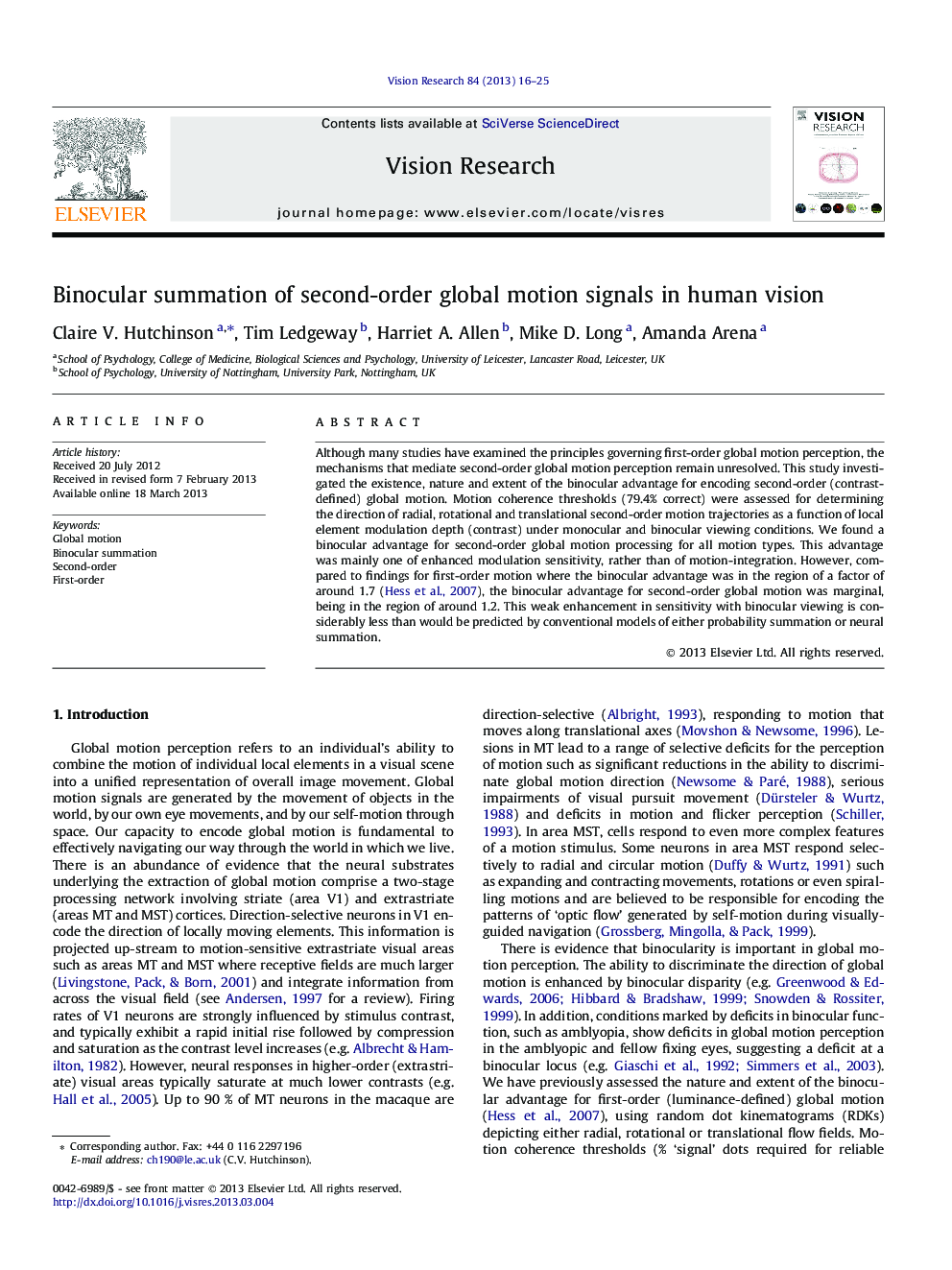| Article ID | Journal | Published Year | Pages | File Type |
|---|---|---|---|---|
| 4033822 | Vision Research | 2013 | 10 Pages |
•We assessed the binocular summation of second-order (contrast-defined) global motion.•There is a binocular advantage for radial, rotational and translational second-order motion.•The binocular advantage is small, relative to that for first-order global motion.•It reflects enhanced modulation sensitivity under binocular viewing conditions.
Although many studies have examined the principles governing first-order global motion perception, the mechanisms that mediate second-order global motion perception remain unresolved. This study investigated the existence, nature and extent of the binocular advantage for encoding second-order (contrast-defined) global motion. Motion coherence thresholds (79.4% correct) were assessed for determining the direction of radial, rotational and translational second-order motion trajectories as a function of local element modulation depth (contrast) under monocular and binocular viewing conditions. We found a binocular advantage for second-order global motion processing for all motion types. This advantage was mainly one of enhanced modulation sensitivity, rather than of motion-integration. However, compared to findings for first-order motion where the binocular advantage was in the region of a factor of around 1.7 (Hess et al., 2007), the binocular advantage for second-order global motion was marginal, being in the region of around 1.2. This weak enhancement in sensitivity with binocular viewing is considerably less than would be predicted by conventional models of either probability summation or neural summation.
